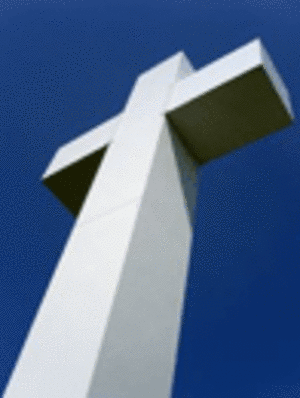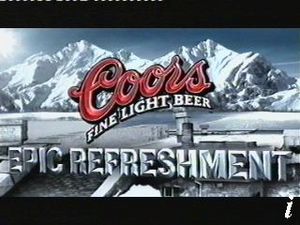Apostolic Pentecostals would have us believe they are the true religion and only their way of life and biblical interpretation can lead us to the pearly gates. Whether you want to believe that or not is up to you, but here are some truth’s about the Apostolic Pentecostal religion you should know about before deciding if they’re right for you.
It is arguable that since Christ himself didn’t recognize the Apostolic Pentecostal religion they have no grounds on which to claim they are the right religion and only they know “The Truth.”
But have you ever asked an Apostolic Pentecostal what happened to their religion after the Apostle’s died? If you haven’t give it a try, their reaction may surprise you.
Most of them will quote Polycarp, Ignatius,, Tertullian and Abelard but have no answer about what happened between then and the early 20th century.
Although typically considered to be a “new” religion, only coming about in 1906 during the Azusa Street Revival held in Los Angeles and founded by Preacher William Seymour, the oneness apostolic doctrine is attributed to a small handful of people and 2 distinctly so.
The earliest known Oneness believer was Charles Parham, an influential preacher originally affiliated with the Methodist religion and the Holiness movement, however in 1895 he so strongly disagreed with the Methodists that he broke away from them and started his own ministry.
In 1898 Parham moved his new religion to Topeka Kansas where he married Sarah Thistlewaite, the daughter of a Quaker.
Parham took a position at Bethel Bible Church where he taught his theories of holiness and divine healing. There he and his fellow students studied and wondered over scriptural references to being “baptized in the holy spirit” and began prayer sessions to determine whether or not such a thing could happen to someone.
On New Years Eve in 1901, Parham along with his students including Agnes Ozman, also an originating Methodist, held a prayer session that included the laying on of hands in an attempt for her specifically to speak in other tongues and supposedly they achieved it. Parham and the other students were also reported to have spoken in other tongues.
Agnes is the first person to have been reported as speaking in tongues since it first happened, biblically speaking, in the Upper Room on the Day of Pentecost according to the King James Bible in Acts 2:38.
Before Agnes Ozman died she told people that she had been wrong in believing that anyone who prayed for it would speak in tongues as a result of being baptized in the spirit.
Parham went on to be the leader of the Apostolic Faith Movement and was preaching his message in Houston Texas where William Seymour enrolled in one of his classes in 1905.
As a student of Charles Parham, William Seymour came to believe in glossolalia or speaking in tongues as proof of being baptized in the Holy Spirit. Even though he only attended Parham’s classes for six weeks, his belief was strong enough that it caused him to lose his position at his local church in Los Angeles.
Out of a church, Seymour found an old building on Azusa Street which had originally housed the African Methodist Episcopal Church in what was back then a racially segregated neighborhood.
The Apostolic Faith Mission was a small church with no pulpit, sound system or real pews and yet its congregation grew quickly between 300 to 1500 people. A growth that came from the holiness revivals they hosted.
In 1906 Charles Parham was invited to preach at the Azusa Street church but it never happened. Parham was being accused of sodomy at the time and his racial opinion didn’t make him very popular. He didn’t agree with mixing races in church and wanted Seymour to segregate it. It has been said that Charles Parham joined the KKK, otherwise known as the Klu Klux Klan, in 1910.
The Azusa Street Revival took California and other places by storm for several years. People flocked to the small building in the thousands from 1906 to 1913. During that time it sustained its share of hardship and criticism. Locals tried to have the building shut down, many called the police and other church leaders were telling their congregations to avoid the Apostolic Faith Mission like the plague.
By early 1915 things had died down and the attention they were getting from the press was gone. Seymour and his wife continued to pastor the church for the rest of their short lives.
At the same time things were slowing down for the Azusa Street church, things were just beginning to pick up at the World Wide Apostolic Camp Meeting. A group of preachers from various places gathered together to share their interpretations of the scriptures and their belief in the Oneness of the Godhead in Arroyo Seco California.
Attending preachers were, R. E. McAlister, John G. Schaepe, Frank J. Ewart, Frank Denny, G. T. Haywood, Harry Morse, R. J. Scott, George Studd, Andrew D.l Urshan, and Homer L. Falkner.
These preachers didn’t necessarily all believe the same thing. They hashed out scriptures and debated theories. Some banded together while others went their separate ways in other denominations.
Since the camp meeting different variations of Apostolic religions were developed and most of them are still active today. The biggest split in the Pentecostal religion to date is the one between the Trinitarians and the Oneness groups.
Some people you might recognize who are or have been associated with Oneness Apostolic churches are, David & the Giants, Lee Greenwood, The Katinas, Tanya Goodman Sykes, Mark Hanby, Gary Oliver and Elvis Presley.




